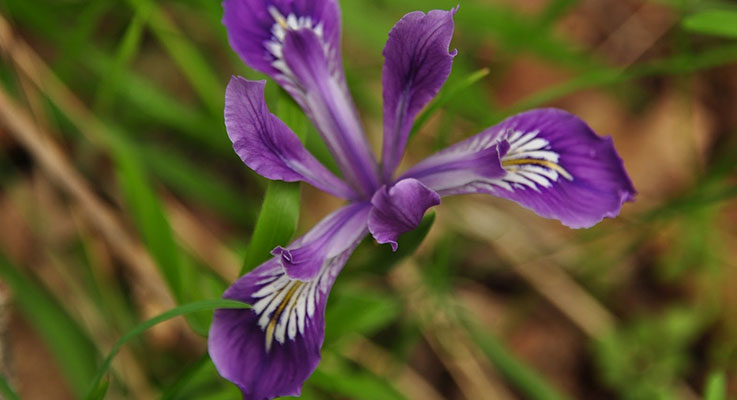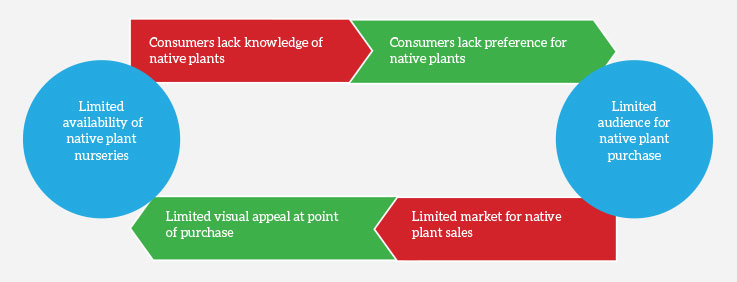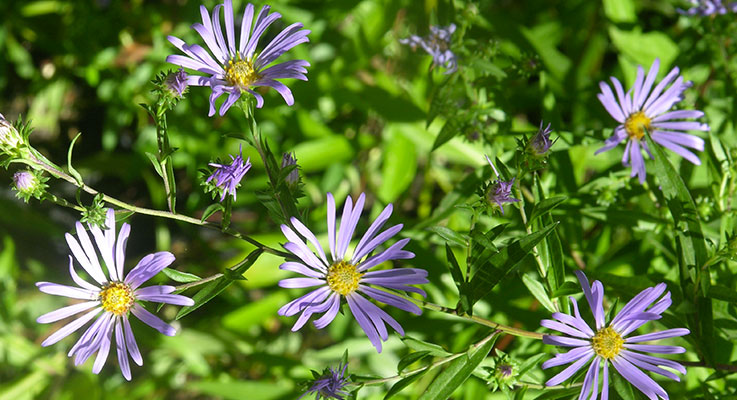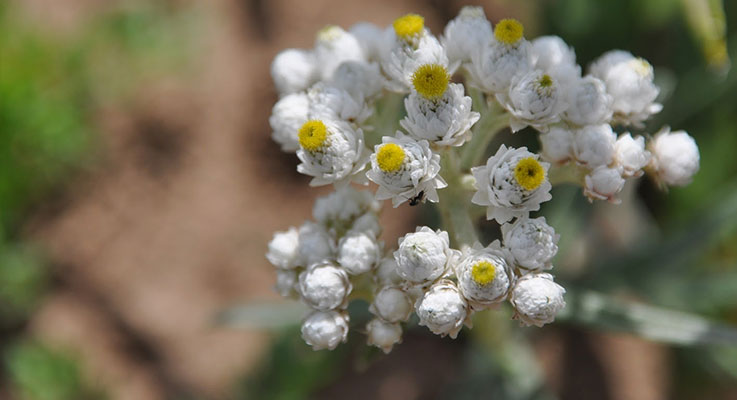
Photo 1. Iris tenax, a popular early season native wildflower. Photo courtesy of Oregon State University
There are barriers to full adoption of these plants, but also opportunities to promote their adoption
By Aaron Anderson
Native plants represent an area of untapped growth and expansion for the nursery industry. For example, the American Society of Landscape Architects (ASLA) ranked native plants and native/adapted drought-tolerant plants as the top two landscape and garden trends in 2018.3 Garden Media Group, a marketing firm focused on gardening and horticulture, included native plants in their list of 2018 Garden Trends.2
Although specific definitions vary, native plants are widely understood to be those plants that were present and naturally-occurring in an ecosystem before the arrival of European explorers. Native plants have a long evolutionary history with a particular ecosystem and are thus thought to be well-adapted to their local climate and well-defended against local pests.
In addition, native plants have been shown to benefit butterflies and birds in the garden.3 Thus, native plants are expected to require less irrigation and pesticides, while simultaneously offering higher quality habitat to native biodiversity.
Despite these purported benefits, barriers exist to the widespread use of native plants in home gardens. For consumers, these barriers include a lack of availability, lack of knowledge about natives, and preferences for showier plants or plants that are more familiar.4
Similar barriers confront the nursery industry. Growers will not offer native plants for sale unless a market exists. Most natives don’t look as pretty as other ornamental plants in the garden center and take time to establish before their true beauty becomes apparent. Gardeners may value a plant’s ecological beauty but be hard-pressed to identify ecologically-valuable plants at the point of sale.
Finally, there is limited information on the performance of native plants, across a realistic range of garden settings, which limits the ability to prioritize plants for sale.

Figure 1. Limited availability of native plants perpetuate a lack of consumer knowledge of — and preference for — native plants, which limits their sales potential and a grower’s willingness to produce them.
In this way, the issues that have limited the sales of native plants are self-perpetuating (Fig. 1) and could be addressed through a combination of ecological research, social science research, and marketing.
To date, there is limited research on the ecological benefits of Pacific Northwest native plants to pollinators. There is also a lack of research on how gardeners perceive Pacific Northwest natives, and whether or not gardeners would purchase and plant local natives. My Ph.D. research aims to fill this void. Specifically, I am screening 23 native Willamette Valley wildflowers for their attractiveness to pollinators and to home gardeners. You can learn more about my research by visiting our lab website (http://blogs.oregonstate.edu/gardenecologylab/native-plants-2/).
In this article, I wanted to focus on the barriers and opportunities that consumers and growers face, related to the purchase or sale of native plants.
Barriers to consumer and natives
When I began my research in 2017, it took a concerted effort to obtain enough individual bulbs, starts, or seeds to install five replicate blocks of each of my 23 native plant species. Because of the variation in plant availability, I had to source plants from multiple native growers.
The Oregon Flora Project served as a valuable resource to bridge this gap. This website contains data on native nursery availability and lists 19 niche nurseries in the Willamette Valley/Portland region (excluding tree nurseries). Though it is not an exhaustive list, it contains the majority of native plant growers in the region and allowed me to target specific nurseries that advertised my specific study plants, without having to blindly drive to multiple nurseries.
Some of my perennial flowers were more easily sourced than others. For example, Iris tenax (Tough-leaf Iris) was listed for sale at 15 of 19 native plant nurseries. Aquilegia Formosa (Western Red Columbine) was listed at 13 of 19 native plant nurseries.
However, many perennials are uncommon: Sidalcea malviflora ssp. virgata (rose checkermallow) is listed at six nurseries, while Sedum oregonense (cream stonecrop) is listed for sale at a single nursery. Though not included in my study, other rare examples of Willamette Valley natives include Aquilegia flavescens and Calypso bulbosa, both of which are listed for sale at one nursery.
Annual seed proved even more elusive, as only two of my annual species were listed as in-stock at more than one nursery. Gilia capitata was listed for sale at four nurseries, and Eschscholzia californica at two of the 19 native plant nurseries in the region.
I frequently receive email requests from home gardeners interested in incorporating native plants into their landscapes. Unfortunately, I often struggle to recommend a local nursery that grows the particular plant they are seeking. This highlights three main barriers for gardeners who are interested in purchasing natives: 1) lack of advertising by native plant nurseries or knowledge by interested gardeners, 2) variation in nursery stock among native plant growers, and 3) geographic distance that gardeners might have to travel.

Photo 2. Symphyotrichum subspicatum, highly attractive to pollinators. Photo courtesy of Oregon State University
Ways to increase native plant sales
Despite the relative difficulty in obtaining native plants, there appears to be growing public interest in landscaping with these species. Government agencies are developing a common message on native plantings, with websites from cities and counties to the USDA and EPA containing informational pages on landscaping with native plants. Recent federal level policies have created opportunities for natives, including the Obama administration’s Pollinator Partnership Action Plan, and the Federal Highway Administration’s efforts to manage roadsides for pollinators.
Because of this, growers have the opportunity to access a relatively underserved market, with potential for further financial gains. Studies have shown that educated consumers are willing to pay a premium for native/non-invasive landscaping plants, as well as for plants that are locally grown.5,6 Additional research found that customers will pay more for designed yards that involve native plants in lieu of lawns.7 These studies, together with a relatively open market, point to opportunities for growers of native plants.
Barriers to native plant production
Adding to the obstacles faced by interested consumers, growers also face barriers to accessing this emerging market. The localized nature of native plants means that markets are regionalized,8 so few native plants can be produced and sold nationwide.
Additionally, efficient and scalable propagation methods are not known for many native plant species. This is compounded by the fact that many smaller nurseries do not have the resources to develop these protocols.8
When grown in a pot, many native plants, even when propagated successfully, are not in bloom in the spring when consumers tend to purchase them. And, compared to showy, exotic flowers, the average gardeners may not be familiar with the ecological beauty of native plants, and may gravitate to familiar garden standards. These are practical issues that need to be addressed before the native plant market can expand.
Another barrier comes from the consumer side. Studies have identified the top issues limiting the use of native plants as: 1) availability, 2) customer preferences, and 3) lack of knowledge about natives.9 The average gardener tends to plant what they are familiar with and what they find aesthetically pleasing, which often means showy, exotic flowers.
These points are all linked; retail centers and growers do not provide native plants, and in turn customers don’t always demand these species because they are unfamiliar with them.
In informal conversations, several local native plant growers brought up similar concerns. The grower or vendor will not offer a product if no one buys it, but consumers get frustrated if they desire plants they cannot purchase.

Photo 3. Anaphalis margaritacea, a drought tolerant wildflower with a diverse community of insect visitors.
Photo courtesy of Oregon State University
Moving forward, there are several solutions that growers could implement to overcome these barriers. The first is growing native species for retail that are attractive to consumers. There are a multitude of native plants endemic to Oregon and prioritizing plants that consumers will find aesthetically pleasing, or attractive for other reasons (e.g., pollinator-friendly, monarch host plant, drought tolerant) will increase both their popularity and their market value.
Similarly, marketing these plants can play an important role. Credible labeling programs will educate consumers about these plants and their traits at the point of purchase. As consumers are willing to pay a premium for plants labeled “native” and “non-invasive,” it stands to reason that additional labeling and marketing that differentiates these flowers, such as “water-wise” and “good for wildlife,” will also benefit growers.
Interestingly, when we asked gardeners to rank our 23 study plants according to aesthetic beauty, only one of the top five-ranked plants was also highly attractive to pollinators: Gilia capitata. However, when we told the gardeners about the ecological benefits of some of the high-performing pollinator plants (e.g. Aster subspicatus, ranked 14th out of 27 for aesthetic beauty or Phacelia heterophylla, ranked 27 out of 27 for aesthetic beauty), they became intent on finding and planting these natives.
We know studies found that native plant adoption is inhibited by lack of availability and lack of consumer knowledge. This suggests a simple path to increasing the market for these plants. If retail garden centers and specialty nurseries expanded their advertisements and stock of native plants, this could create a positive feedback loop,10 thereby increasing consumer awareness and demand for these plants.
Aaron Anderson a graduate student in the Horticulture Department at Oregon State University and graduate research assistant in the OSU Garden Ecology Lab. He can be reached at [email protected].
References:
1. Howard, C. ASLA survey: Demand high for sustainable residential landscapes – Garden Center Magazine. Available at: https://www.gardencentermag.com/article/asla-demand-sustainable-residential-landscapes/. (Accessed: 19th November 2018)
2. Garden Media Group. Trends Report. (2018)
3. Burghardt, K. T., Tallamy, D. W. & Shriver, W. G. Impact of native plants on bird and butterfly biodiversity in suburban landscapes. Conserv. Biol. 23, 219–224 (2009).4. Wilde, H. D., Gandhi, K. J. K. & Colson, G. State of the science and challenges of breeding landscape plants with ecological function. Hortic. Res. 2, 14069 (2015).
5. Yue C, Hurley T.M., Anderson, N. (2011). Do native and invasive labels affect consumer willingness to pay for plants? Evidence from experimental auctions. Agric Econ; 42: 195–2056. Yue C, Hurley T, Anderson NO. (2012). Heterogeneous consumer preferences for native and invasive plants: evidence from experimental auctions. HortScience; 47: 1091–1095
7. Helfand, G. E., Park, J. S., Nassauer, J. I., & Kosek, S. (2006). The economics of native plants in residential landscape designs. Landscape and Urban Planning, 78(3), 229-240
8. Norcini, J.F. (2007) Native Plants: An Overview (ENH1045). Environmental Horticulture Department, University of Florida extension. Revised March 2008. Reviewed April 2016.
9. Wilde, H.D, Kamal JKG, and Colson, G. (2015). “State of the science and challenges of breeding landscape plants with ecological function.” Horticulture research 2: 14069
10. Brzuszek, R. F., & Harkess, R. L. (2009). Green industry survey of native plant marketing in the southeastern United States. HortTechnology, 19(1), 168-172.



